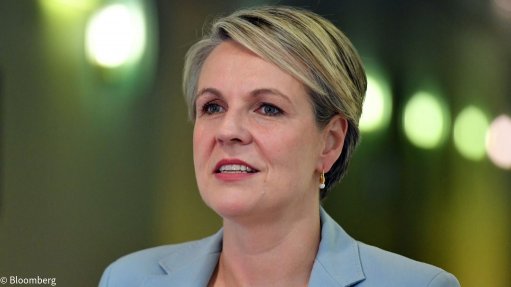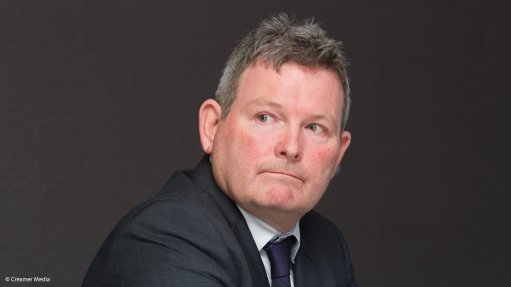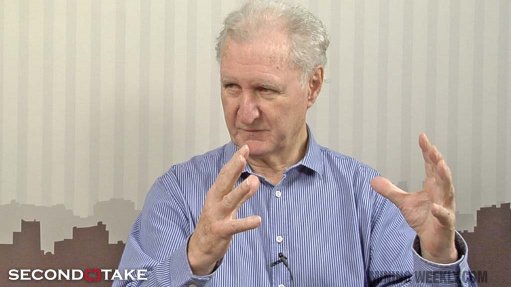Concern over proposed two-year opencast iron magnetite mine
The Democratic Alliance (DA) is concerned that mining company Ngwenya Mining & Exploration intends to start an opencast iron magnetite mine in Heidelberg, Gauteng, without conducting an environmental-impact assessment (EIA).
“The DA has established that no application for an EIA has been lodged with the Gauteng provincial government,” DA agriculture and rural development spokesperson Thomas Walters said in a press statement.
The area was zoned for agriculture and not mining, according to the Lesedi Local Municipality Spatial Development Framework, said Welverdiend Triangle Conservancy representative Reg Humphrey at a public meeting on August 29, which was held to discuss the mining permit application for the iron magnetite mine on Portion 19 of the Kafferskraal farm.
The DA issued an advance warning to Gauteng Agriculture and Rural Develop- ment MEC Nandi Mayathula-Khoza and the Gauteng Provincial Legislature about the potential consequences and negative impact of the operation, should it be allowed to proceed.
At the public meeting, a representative from Agri Gauteng highlighted that the area in question was the biggest food producer in Gauteng and he was concerned about the effect the operation would have on the people in the area and the future of the land, should the area be mined.
Midvaal ward councillor WF de Agrella pointed out at the public meeting that he was not notified about the proposed mine. This raised questions about the involvement and participation of local government in the discussions pertaining to the proposed mine.
Humphrey questioned the acceptance letter for Ngwenya’s mining permit application.
He said, in the letter, the Department of Mineral Resources (DMR) had stated that an EIA and environmental management plan (EMP) had to be undertaken.
However, Geo Soil & Water (GSW) representative Adri Joubert said a mining permit for 1.5 ha was applied for and not a mining right; therefore, a basic environmental assessment was per- formed and not a complete and comprehensive EIA, which she said was in line with Section 27 of the Mineral and Petroleum Resources Development Act of 2002 (MPRDA).
Ngwenya representative S Tolmay at the meeting said, owing to an uncertain market, it was decided that a mining permit should be applied for; however, if found to be feasible, Ngwenya would apply for a mining right in future.
Ngwenya received a notice of acceptance for its mining permit application from the DMR on July 11. GSW was appointed to conduct a basic environmental assessment to compile an EMP for submission to the DMR and facilitate the public participa- tion process in terms of the MPRDA.
Tolmay later said, according to the minutes of the public meeting, 40 000 t would be removed over the two-year life of the mine – 5 000 t each quarter – and about 20 people would be employed. Blasting would take place two to three times a year, with mining being between 1 m and 2 m deep. However, as a gas pipeline is in close proximity to the mining area, specialised blasting techniques will be required to prevent damage to the pipeline. Ngwenya still has to apply for blasting permission from the DMR.
Ore will be processed off site, said Tolmay, who added that it would not be necessary to make provision for overburden, as most of the ore is found on the surface, covered with a thin layer of top soil about 25 cm thick. This top soil will be placed along the perimeter of the mine.
Ngwenya representative R Puckree said magnetite was sold at R500/t and that the country would benefit from the rates and royalties paid.
The closure cost, determined by the DMR Closure Cost Guideline, is about R1-million. Ngwenya will be responsible for rehabilitation, which will be under- taken concurrently to mining and then completed at final closure.
The proposed mining site is within 1 km (about 850 m) of the Suikerbosrand Nature Reserve and the Welverdiend Triangle Conservancy. Humphrey indicated that there should be a buffer zone of at least 1 km around the nature reserve. He said, if given a choice, a 3 km buffer would be preferred.
Environmental consultant Digby Wells Environmental was commissioned by GSW in August to conduct an environmental dust-fallout and noise-impact assessment for magnetite quarrying at the proposed site.
According to the dust-fallout assessment issued by Digby Wells Environmental, the expected dust-fallout and particulate- matter emissions from the proposed magnetite quarry would not impact on the nearest residences. Joubert said the noise and dust basic environmental assessment indicated no impact on either the Suikerbosrand Nature Reserve or the ambient air-quality levels at the reserve, which could be affected by the proposed magnetite quarry.
While the expected noise levels would measure 5 dB above the baseline level at the residences, an increase of about 8 dB to 10 dB was required before the sound subjectively appeared to be significantly louder. Owing to the duration of the proposed project, the significance of the impact was deemed to be moderate. The expected noise from the blasting would be significantly higher than the existing ambient noise levels at the residences, but the indicated frequency of blasts, however, meant the significance dropped to a moderate level.
The proposed magnetite quarry would not impact on the ambient noise levels at the Suikerbosrand Nature Reserve because the baseline level of 64 dB at the road adjacent to the southern border of the reserve was higher than what the predicted contribution of the noise levels at the proposed quarry was expected to be, the assessment revealed.
However, Digby Wells Environmental recommends that Ngwenya perform a detailed model to accurately assess the emission concentrations of particulate matter emitted by the proposed quarry.
Joubert said there was no guarantee that water resources would not be impacted on, with the basic environmental assess- ment indicating that the impact on water resources would be low to moderate, if proposed mitigation measures were implemented.
She added that no water treatment was envisaged at the iron magnetite mine, with berms and trenches planned to contain all contaminated water within the footprint of the mine. However, the stakeholders present at the meeting questioned the high-volume inflow from the adjacent Suikerbosrand Nature Reserve. The proposed mine is also within 500 m of a wetland boundary and Ngwenya will have to apply for a water-use licence before mining can start.
Local residents continuously reiterated during the meeting that the EIA docu- ments had to be produced, just like the EMP. They believed that, had Ngwenya provided these documents, the mining permit application would not have been granted, as it would have shown it was unfeasible to mine in the proposed area.
Puckree commented towards the end of the public meeting that, should the EIA be a concern of the residents, the company would have to ensure one was conducted.
The DA has also called on Mayathula-Khoza to use her lobbying powers to coordinate with the DMR to ensure that residents’ rights to be consulted in matters that affect them are upheld, concluded Walters.
Comments
Press Office
Announcements
What's On
Subscribe to improve your user experience...
Option 1 (equivalent of R125 a month):
Receive a weekly copy of Creamer Media's Engineering News & Mining Weekly magazine
(print copy for those in South Africa and e-magazine for those outside of South Africa)
Receive daily email newsletters
Access to full search results
Access archive of magazine back copies
Access to Projects in Progress
Access to ONE Research Report of your choice in PDF format
Option 2 (equivalent of R375 a month):
All benefits from Option 1
PLUS
Access to Creamer Media's Research Channel Africa for ALL Research Reports, in PDF format, on various industrial and mining sectors
including Electricity; Water; Energy Transition; Hydrogen; Roads, Rail and Ports; Coal; Gold; Platinum; Battery Metals; etc.
Already a subscriber?
Forgotten your password?
Receive weekly copy of Creamer Media's Engineering News & Mining Weekly magazine (print copy for those in South Africa and e-magazine for those outside of South Africa)
➕
Recieve daily email newsletters
➕
Access to full search results
➕
Access archive of magazine back copies
➕
Access to Projects in Progress
➕
Access to ONE Research Report of your choice in PDF format
RESEARCH CHANNEL AFRICA
R4500 (equivalent of R375 a month)
SUBSCRIBEAll benefits from Option 1
➕
Access to Creamer Media's Research Channel Africa for ALL Research Reports on various industrial and mining sectors, in PDF format, including on:
Electricity
➕
Water
➕
Energy Transition
➕
Hydrogen
➕
Roads, Rail and Ports
➕
Coal
➕
Gold
➕
Platinum
➕
Battery Metals
➕
etc.
Receive all benefits from Option 1 or Option 2 delivered to numerous people at your company
➕
Multiple User names and Passwords for simultaneous log-ins
➕
Intranet integration access to all in your organisation

















